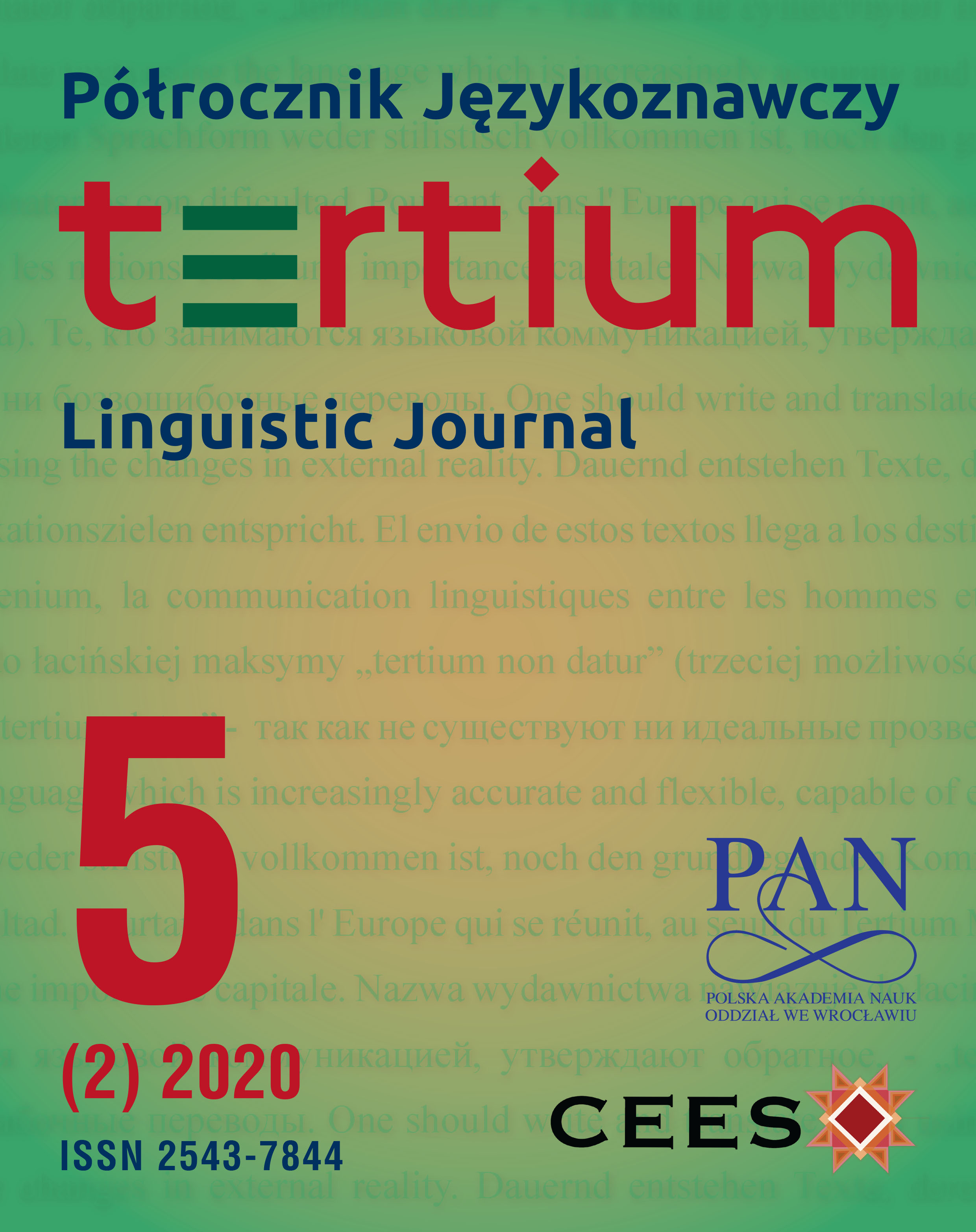Abstrakt
The article aims at a revision of such terms as sentence, utterance, speech act, or communication event in view of new research needs and a broader understanding of language as involved in a complex communication process and, thus, considered a tool for not only generating meanings but also conveying them in interpersonal collaboration. From such a perspective, language appears to be not only a system but also one of the tools of symbolising meanings and intentional acts which serve the purpose of generating and regulating social bonds. The purpose of the authors is, thus, to define traditional linguistic concepts in order to make them good tools to describe the types of communication events and the ensuing individual interactions. We also intend to resolve the existing terminological confusion, i.e. to eliminate the employment of the same terms to describe different speech events and different levels of speech, and, as a result, to place the concepts in a hierarchy and assign them clear definitions. All this is undertaken in order to fit in the perspective of the observer as an active participant and contributor to the communication event, utterance or even a sentenceBibliografia
Austin, John L. ([1961] 1993) “The Meaning of the Word” [In:] Philosophical Papers. Oxford: Oxford University Press; 23–43.
Bloomfield, Leonard (1926) “A Set of Postulates for the Science of Language.” Language 2 (3); 153–164.
Bühler, Karl ([1934] 1990) Theory of Language. [Sprachtheorie. Die Darstellungsfunktion der Sprache. Jena: G. Fisher]. Trans. Donald Fraser Goodwin. Amsterdam/Philadelphia: John Benjamins.
Fries, Charles Carpenter (1952) The Structure of English. An Introduction to the Structure of an English Sentence. New York: Harcourt, Brace and World.
Harris, Zeelig (1951) Methods in Structural Linguistics. Chicago: University of Chicago Press.
Klemensiewicz, Zenon (1937) Składnia opisowa współczesnej polszczyzny kulturalnej, Kraków: Polska Akademia Umiejętności.
Knapp, Mark L., Judith A. Hall (2013) Nonverbal Communication in Human Interaction. Boston: Wadsworth Cengage Learning.
Lyons, John (1977) Semantics. Cambridge: Cambridge University Press.
Polański, Kazimierz (ed.) (1999) Encyklopedia językoznawstwa ogólnego. Wrocław: Zakład Narodowy im. Ossolińskich.
Searle, John (1969) Speech Acts. Cambridge: Cambridge University Press.
Tabakowska, Elżbieta (ed.) (2001) Kognitywne podstawy języka i językoznawstwa. Kraków: Universitas.
Yngve, Victor H. (1992) “Why is Language Different?” [In:] Ruth M. Brend (ed.) The Eighteenth Lacus Forum 1991. Lake Bluff: Linguistic Association of Canada and the United States; 511–518.
Licencja Uznanie Autorstwa- Użycie niekomercyjne-Bez utworów zależnych (CC BY-NC-ND). Autorzy zachowują prawa autorskie do swoich publikacji.

